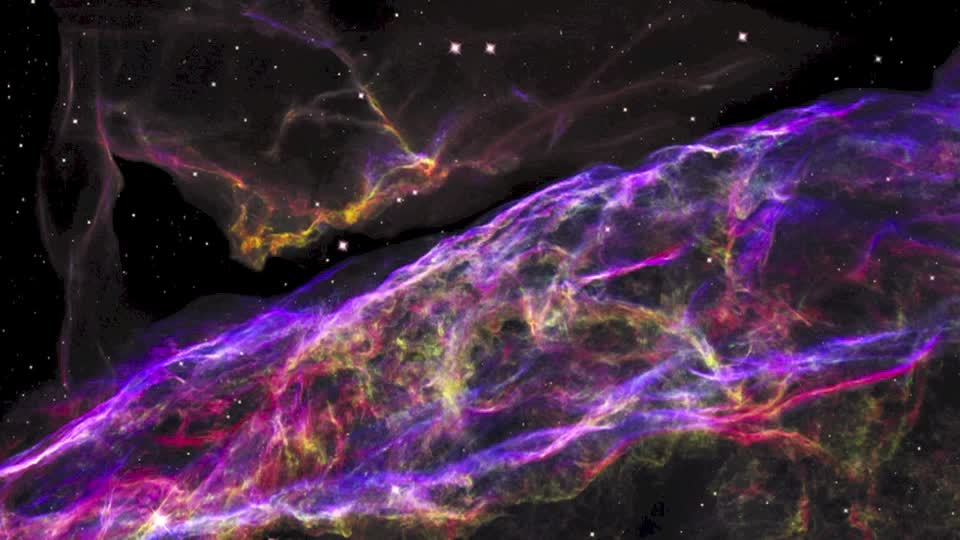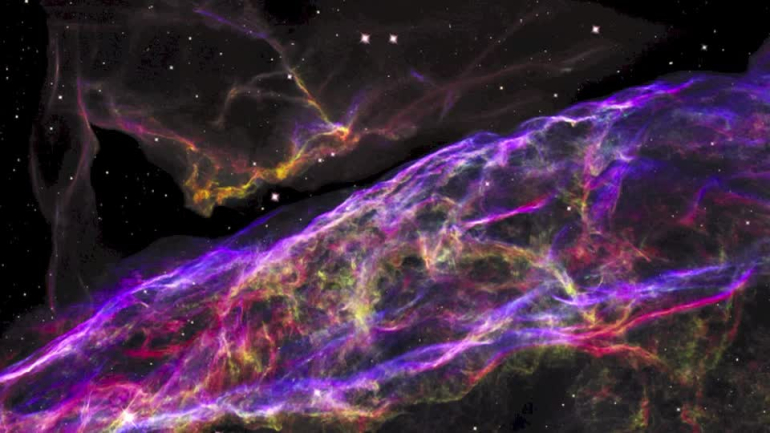
UNSW Canberra astronomer Dr Ashley Ruiter gives us an insight into the life cycle, and ultimate fate, of stars. If this and all things stellar pique your interest, you can hear more from Dr Ruiter at Science in the Pub on Thursday 9 March. Find out more and register here.
How are stars ‘born’?
Stars are born in huge clumps of cold gas and dust in space that mostly hang out in the ‘disc’ part of galaxies (what you might call ‘the plane’ of our own Milky Way Galaxy). In a nutshell, when the central region of a massive gas (mostly hydrogen) and dust cloud is able to maintain extremely cold temperatures, it can collapse under its own gravity. As the rotating clump collapses, it becomes denser and heats up. Eventually, the clump becomes hot enough to ignite hydrogen in its centre, and hydrogen fusion is sustained. This mass then becomes a 'protostar'. This is what distinguishes a star from a planet: a star has enough mass, and thus density, to fuse hydrogen in its core.
When the protostar first starts to burn hydrogen, it still has a lot of gas and dust surrounding it which obscures it at visible wavelengths, so astronomers normally need to look for these nascent stars using telescopes that detect less energetic light (i.e. infrared). Understanding star formation involves including a lot of complex physical processes into numerical simulations on supercomputers.
Why do stars ‘die’?
Stars are said to ‘die’ when they run out of fresh fuel to fuse one element into another. But how and when this happens really depends on how massive the star is! Lower mass stars usually have a gentle end and become something (confusingly!) called a “planetary nebula”, while massive stars will end their evolution more violently as a certain type of (core-collapse) supernova.
The Sun is quite light in weight as far as stars go. Right now, the Sun is converting its core hydrogen into helium. One day (many billions of years from now!) the Sun will run out of its now plentiful hydrogen fuel and stop core fusion, its atmosphere will expand, and the Sun will evolve into something we call a Red Giant. The physics are a bit more complicated, but at the end of this Red Giant phase, the Sun’s core will become dense enough to ignite once again - this time fusing helium into heavier elements like carbon.
Lightweight stars like the Sun aren’t massive enough to fuse elements that are much heavier than carbon and oxygen, so these stars will end their stellar evolution as white dwarfs, which are very dense and hot left-over “burned out cores” of light- and middle-weight stars. White dwarfs will never explode as a supernova unless they are able to steal a lot of mass from a star that happens to be nearby. These ‘Type Ia’ supernovae are more rare, but more luminous than the other type of ‘core-collapse’ supernova that are described next.
Stars in the more massive category are able to fuse heavier elements (beyond oxygen) in their cores and can synthesize elements as heavy as iron. But the star cannot fuse iron to make heavier elements and therefore the star loses an internal source of energy and can no longer hold itself up against gravity's crushing force. So, in brief: the core collapses, and the outer layers come crashing down resulting in a ‘core-collapse’ supernova with the star’s outer layers being flung into space. For example, the Red Supergiant star Betelgeuse in the constellation Orion will not evolve into a white dwarf. Instead, it will end its life in a core-collapse supernova explosion, and will leave behind an ultra-dense remnant, e.g. a neutron star.
What does a ‘dying’ star look like from earth?
The depends a lot on 1) how far away the star is, 2) what type of star it is and 3) whether the star is obscured by dust!
But if the dying star is a supernova, the event will brighten steadily over 15-20 days, reach a peak, and then fade over time. A star like Betelgeuse - when it explodes as a supernova - will be extremely bright!
This is because it’s in our own Galaxy and therefore very close. Some nearby supernovae that exploded hundreds to thousands of years ago have associated records with detailed descriptions, while for other supernovae such records are very hard to find. In 1987 a supernova occurred in a nearby satellite galaxy and was easily visible in the Southern Hemisphere. Most supernovae that explode do so in far-away galaxies, so we only know about them through dedicated deep sky surveys, though occasionally new supernovae are discovered by amateur astronomers.
For lower mass stars, there is no violent explosion (unless it’s a Type Ia supernova!), so things are more subtle. One example of a ‘dying’ star that is now a planetary nebula is the Southern Ring Nebula (NGC 3132), recently imaged by the James Webb Space Telescope. Led by our colleague at Macquarie University, we wrote about how this planetary nebula (i.e. newly formed white dwarf) is actually a system of 4 or 5 stars in a recently published Nature Astronomy article.
Hear more from Dr Ruiter at Science in the Pub on Thursday 9 March. Find out more and register here.
